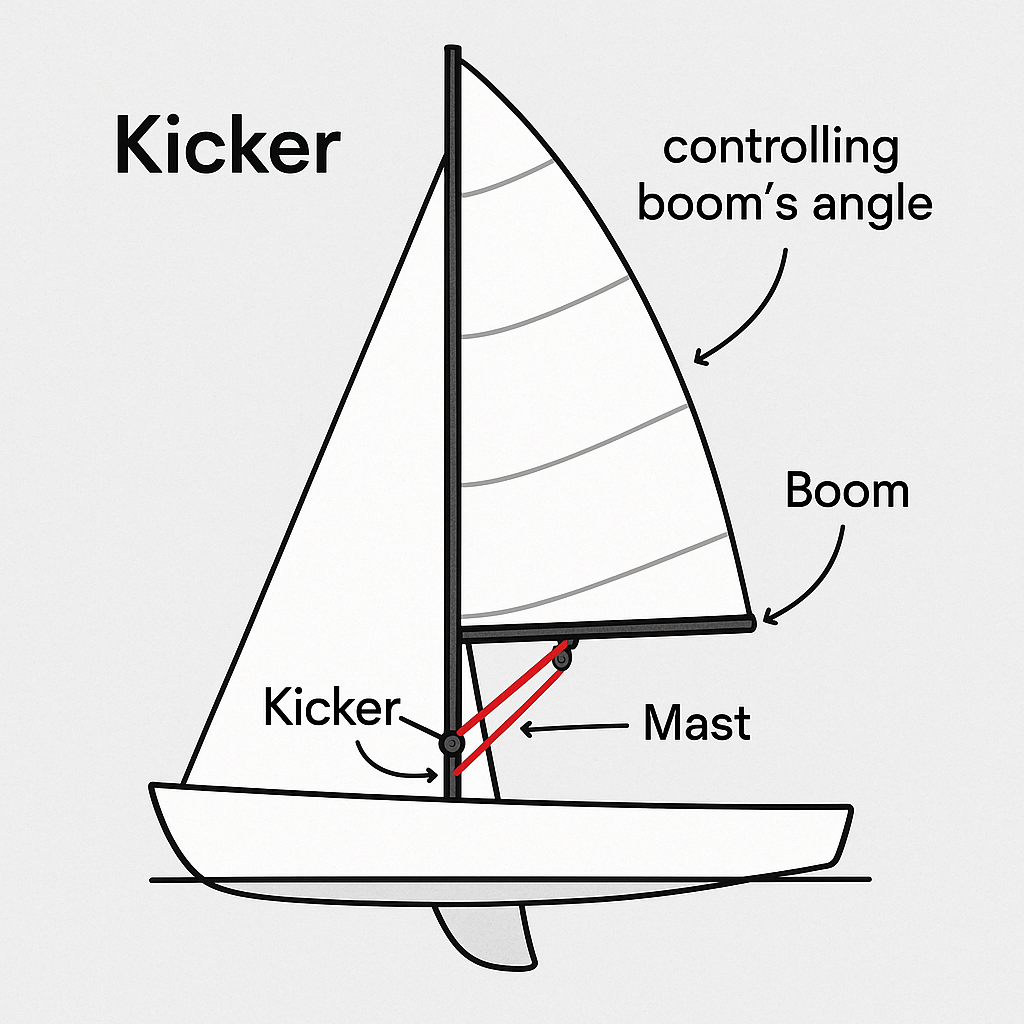Kicker: A Line or Tackle System Used to Control the Boom’s Vertical Angle and Sail Shape
Definition: A kicker, also known as a vang in many regions, is a line or tackle system used on a sailboat to control the vertical angle of the boom. By adjusting the kicker, sailors can influence the tension on the leech of the mainsail, thereby controlling the sail’s shape and optimizing the boat’s performance. Vang's are typically rods and kickers are ropes and pullies.
Understanding the Kicker:
The kicker is a crucial sail control mechanism that prevents the boom from lifting when sailing downwind or on a broad reach. Without a kicker, the boom would naturally rise due to the pressure of the wind on the sail, causing the mainsail to lose its optimal shape. By pulling the boom downward, the kicker maintains the desired sail shape, ensuring better control, speed, and efficiency.
How the Kicker Works:
Tensioning the Leech:
When the kicker is tightened, it pulls the boom downward, increasing tension on the leech (the trailing edge of the sail). This action flattens the sail, reducing its curvature (draft) and decreasing drag, which is particularly useful in stronger winds.
Loosening for Power:
Easing the kicker allows the boom to rise slightly, reducing leech tension and making the sail fuller. This fuller sail shape is more effective in light winds as it captures more wind and increases the boat's power.
Applications in Sailing:
Downwind Sailing:
The kicker is particularly important when sailing downwind or on a broad reach, where the wind angle can cause the boom to lift. The kicker keeps the boom down and maintains the sail's efficiency.
Upwind Sailing:
Although more critical downwind, the kicker can also be adjusted while sailing upwind to control the twist in the mainsail and optimize sail shape.
Performance and Stability:
Proper use of the kicker can reduce excessive heel by flattening the sail, thus improving the boat's stability in gusty conditions.
Examples of Usage:
"Tighten the kicker to keep the boom from lifting as we sail downwind."
"Ease the kicker slightly to allow for a fuller sail shape in these light winds."
"The kicker is essential for maintaining control of the sail shape during a broad reach."
Visual Representation:
Image Description: Diagram of a sailboat showing the kicker attached to the boom and mast, illustrating its role in controlling the boom’s angle.
Importance in Sailing:
The kicker is a vital tool for controlling the mainsail’s shape and the boom’s position, especially in varying wind conditions. Proper use of the kicker helps optimize sail performance, reduce excessive heel, and maintain better control of the boat. Whether cruising or racing, understanding how to adjust the kicker is essential for effective sail management.
Related Terms:
Boom:
The horizontal spar that supports the foot of the mainsail and is controlled by the kicker.
Mainsail:
The primary sail attached to the mast and boom.
Leech:
The trailing edge of the sail, which is affected by the kicker’s tension.
Outhaul:
A line used to adjust the tension along the foot of the mainsail, working with the kicker to control sail shape.
Conclusion:
The kicker is a crucial sail control line that allows sailors to adjust the boom’s vertical angle and the shape of the mainsail. Understanding how to effectively use the kicker can enhance your boat's performance, particularly when sailing downwind or in changing wind conditions. Mastery of kicker adjustments is key to optimizing sail efficiency and ensuring a stable, controlled sailing experience.
